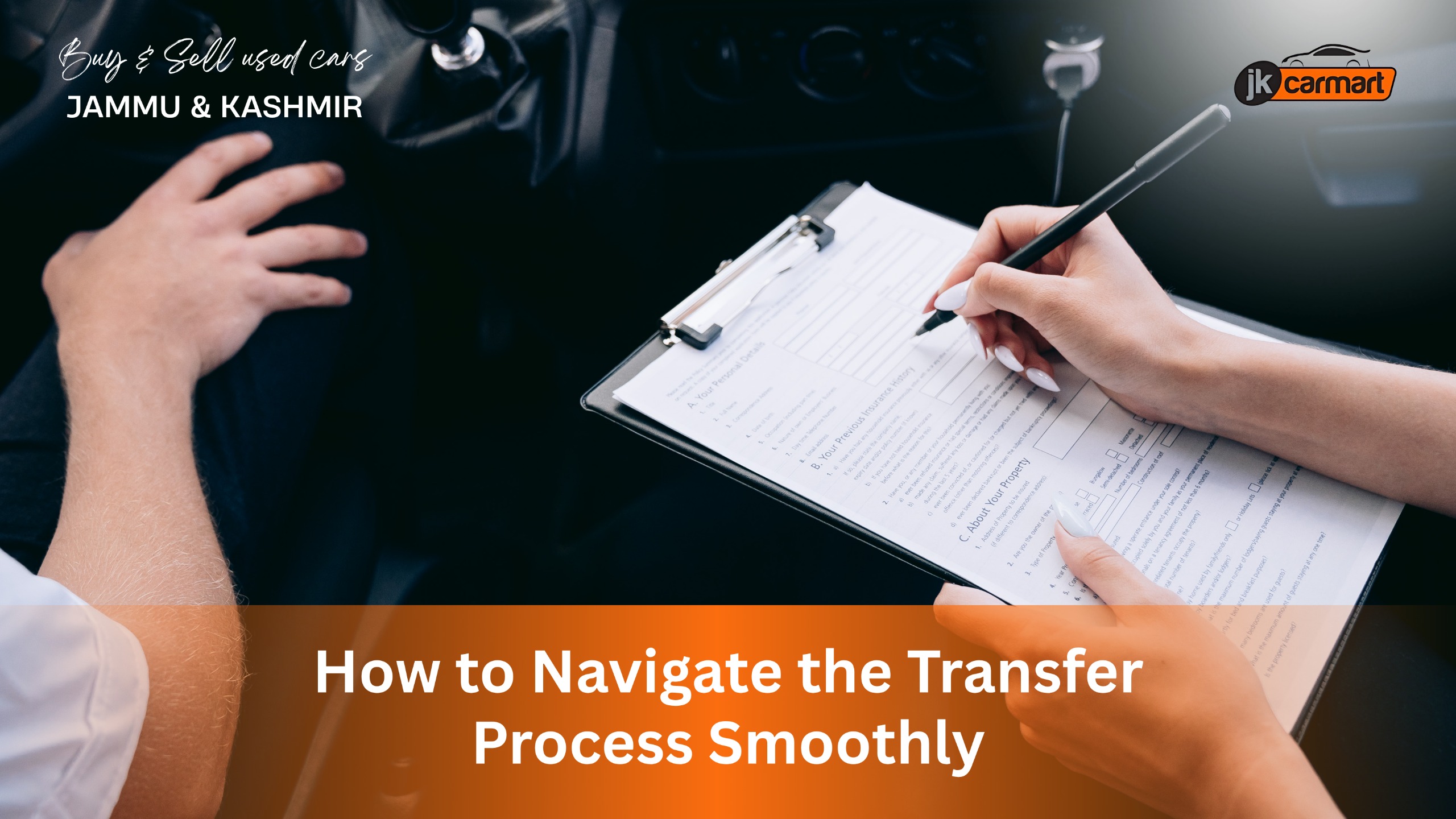Introduction
India’s second-hand car market is ever-growing and now, it’s even surpassing new car sales. Millions of individuals and families are opting for a used car instead of a showroom-new one every year.
And why not? You get the convenience and security of a car without having to take the harsh first-year depreciation hit, and you can also manage to buy a higher model of car within your desired budget.
So, understandably, it seems like the more practical path for car buyers.
But after the selection of the car, now comes the most important part: The process of transfer of ownership, because while purchasing a second-hand vehicle seems to be a routine affair, selection, negotiation, pay and then drive away, the actual possession is only after the process of transfer.
It is not just a matter of confirming a formality. Handling the transfer process carefully and doing all the paperwork correctly is what safeguards the buyer as well as the seller from legal, monetary, as well as criminal liabilities
To save you unnecessary stress, I’ve put together this simple and practical guide to handle the transfer process of your secondhand vehicle:
Why The Transfer of Ownership is Important?
Transferring ownership ensures that
- The vehicle is legally in the name of the buyer
- The seller is protected from future liabilities, such as traffic fines or legal disputes.
- Insurance claims are valid under the buyer’s name
- It’s the law: Must be completed within 30 days under the Motor Vehicles Act (1998)
- Insurance claims: In case of non-transfer, claims may be refused.
- Prevents misuse issues – Safeguards the seller if the vehicle is misused later.
- Facilitates resale: The Buyer can’t resell it further if the transfer is not done.
- Facilitates interstate usage: Required for re-registering in another state.
- Peace of mind: Provides open and clear ownership to the buyer.
Documents Needed for the Transfer Process
- Original Registration Certificate (RC)
- Current insurance certificate
- PUC certificate (Pollution Under Control)
- Form 29 (seller) and Form 30 (buyer)
- PAN card or Form 60
- Proof of Address (Aadhaar, Voter ID, etc.)
- Passport-size photos of both the seller and buyer
- NOC from the bank if the vehicle was purchased on loan
- Form 28 for interstate transfers
Have scanned copies of these ready for instant upload on the Parivahan portal if going the digital way.
Step-by-Step Transfer Process
- Obtain the NOC: Clear dues and obtain the NOC from your bank if there’s an ongoing loan. For inter-state transfers, obtain Form 28 (NOC) from the originating RTO.
- Visit Parivahan or RTO: Go to your nearby RTO or just log in to the Parivahan website and choose “Transfer of Ownership.” Input vehicle details and undergo Aadhaar-based e-KYC authentication.
- Submit Forms 29 and 30: Upload signed forms along with RC, insurance, PUC, etc.
- Pay transfer fee: This will be ₹300–₹600 based on the state and vehicle.
- Authentication by RTO: RTO can inspect the vehicle and authenticate documents.
- Obtain the new RC: The new RC with the buyer’s name will be issued online or mailed as a smart card by post.
Special Cases to Remember
- Inter-state transfers: This requires Form 28 from the old RTO and may require payment of road tax in the new state.
- Transfer on death: On the death of the owner of the vehicle, the legal heir can carry out the transfer using Form 31 along with documents of heirship and the death certificate.
- Outstanding loans: Get the form 35 from your bank that confirms loan closure before starting the transfer.
- Keep in mind: Finish the transfer within 30 days to evade fines and hassle.
JKCarMart’s Role in Making Transfers Easier
In case you reside in Jammu & Kashmir, JKCarMart makes the transfer easier for you by introducing you to genuine buyers and sellers, preparing all documents before the deal. They help you verify whether the RC is genuine using government websites and assist with forms and papers.
For instance, JKCarMart urges clients to verify RC details such as engine and chassis numbers prior to payment, eliminating fraud danger and post-sale disputes. It is a transparent, commission-free platform that seeks to make your transfer transaction transparent and safe.
Practical Tips to Facilitate a Smooth Transfer
- Settle pending challans before starting the process.
- Double-check documents, especially address and name spellings.
- Keep soft copies of all documents easily accessible for hassle-free uploads.
- Buyer and seller going together to the RTO, if at all, should resolve issues instantly.
- Keep tracking your transfer process online to avoid missing any verification step
Conclusion
Selling or buying a vehicle isn’t hard if you have everything in order. Get the right papers, clear your loans, and use the Parivahan portal for a smooth transfer process. Platforms like JKCarMart can help by giving you transparency and guidance on papers before you complete your sale or purchase.
Do it the right way, and you’ll save yourself trouble in the future while giving the new owner a genuine, legal start with your car.





